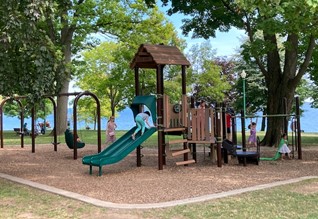Human beings can’t seem to separate working harder from working smarter; after all, innovating to speed up how a job gets done is often more productive! The main way this has been accomplished in the last century is through technology. The question is, how can we stay on top of the future of the work in an era of rapid technology advancements?
The future of the work in an era of rapid technology advancements can be seen in the way technology is already shaping the future of several industries. According to PwC, some current technology trends could take shape into a world where innovative minds have the most power, or a world where corporations have more sway than political authority.
In this article, Buddy Schum of Bucks County explores not only the above-mentioned possible futures that technology could create for work industries, but also a few more potential outcomes. By the conclusion, we should have some idea of how the world will look when it comes to work and technology’s relationship to one another!
4 Ways Technology Can Change the Future of Work
Work is society’s main form of improvement. Lives are benefitted and societies run on several different forms of industry. It also takes up a huge portion of an individual’s day. With so much of our lives wrapped up in work and the ever-changing culture of industry, it makes sense to try and understand how technology will affect that culture, even in the future.
Let’s take a look at four ways technology is projected to change the future of human work, in general, below:
- Innovative Minds Are Most Benefitted
- Corporations Have the Authority
- Companies Value Responsibility
- Humanity is the Highest Priority
A few of these are positive, but some seem to be on the negative side of potential outcomes. Now we’ll go into an even closer look at these different scenarios and what makes them possible according to technology today!
Innovative Minds Are Most Benefitted
The first way we see that technology may lead work society is in the benefits toward those with innovative minds. Digital platforming is already providing a virtual stage for specialized interests to suddenly become celebrated.
This will lead to innovative projects moving quickly, but only innovators being given frequent job opportunities while more regulative workers become less valuable as assets.
Corporations Have the Authority
Because most corporations have deep enough pockets to not only afford the latest in technology, but even invent the latest technology for their own purposes, one result may be that corporations have all the society.
Therefore, large companies with large workforces may become even more powerful than some governments!
Companies Value Responsibility
Otherwise, companies who are given the ability to keep track of their assets and the way humanity is interacting with their products, primarily through data collection and social media, might begin to value being held accountable more highly.
When companies have so much riding on the way they are socially perceived, they can be helped into using technology to protect and serve not only their employees, but their clients, no matter the industry.

Humanity is the Highest Priority
Finally, the last PwC-projected future of work thanks to technology will be a world that makes humanity itself the top priority. This would be done through financial technology, which we’re already seeing on the rise in terms of not only crypto-currency, but crowd-funding!
When crowd-funding is at it’s peak in popularity, it means that humans will have the opportunity to pay for the work they want to see accomplished, rather than those with the deepest pockets and highest corporate standing making the decisions.
In Conclusion
In summary, technology is already changing the future of work in the form of automated processes, artificial intelligence replacing human interaction, and in-person interactions being streamlined into virtual meetings. However, the effects can turn out for humanity’s good, or present us with new challenges.
Some of these challenges could be that those who come up with new technology become the ones with the most power, or corporations begin to replace traditional governments in terms of power. Otherwise, humanity might become each company’s highest priority, thanks to technology giving access to more public feedback and individual experiences.
Whether or not technology will make the future of work bright or dark, only time will tell!



